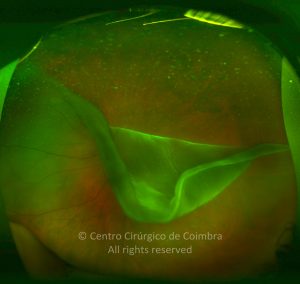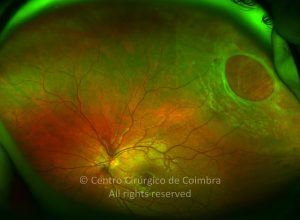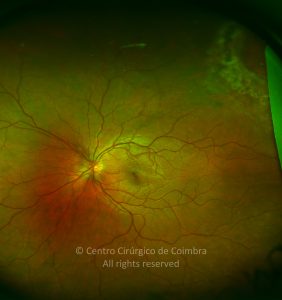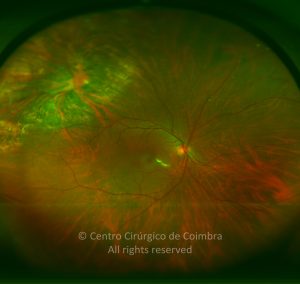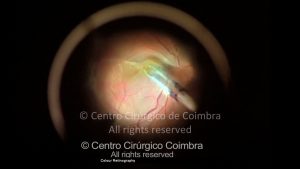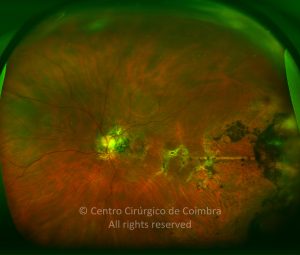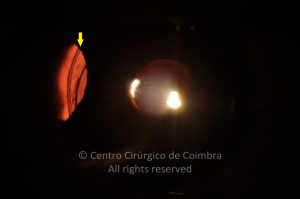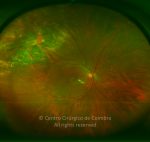Ocular trauma cases are typically complex. Correct management demands a thorough structuring and adequate planning. Decisions such as the number of surgeries planned, what issues should be addressed in each and the timing between them should be pondered ahead in order to maximize potential gains in visual function and decrease the risk of complications. Traumatic retinal detachment is a serious complication of ocular trauma. Typically these are complex cases that should only be approached by an experienced vitreoretinal surgeon.
Several types of retinal detachment can occur after trauma. Rhegmatogenous retinal detachment is caused by a retinal break. The time between ocular trauma and the development of retinal detachment varies from hours to years. Several factors can influence this time window, such as the type of breaks, their location, presence of vitreous hemorrhage, status of the vitreous, and the presence of vitreo-retinal traction.
Traction is a fundamental mechanism in the initiation and perpetuation of the retinal detachment, and should be addressed specifically. Two main surgical options are available for dealing with traction. Scleral buckling, relieves traction by shortening the distance between the end points of the traction force. In trauma cases the vectors of vitreoretinal traction are generally multidirectional and therefore a circumferential buckle should be favored. Pars plana vitrectomy (PPV) addresses the traction at its origin – the vitreous. Furthermore, PPV simultaneously addresses both dynamic and stationary traction. It also allows the approach of other co-existing intra-ocular pathologies. PPV should be as thorough as possible.
Tractional retinal detachment is caused by vitreo-retinal traction, when no retinal break is present. Usually the progression is insidious. The preferred surgical approach should be PPV, because it allows the elimination of traction at its origin, addresses both stationary and dynamical traction, and is able to release anterior (peripheral), posterior and subretinal traction.






